March 2018
Honoring Yesterday – Protecting Tomorrow
Vol. 49, No. 3
What’s Inside
- President’s Message
- A Retirement Deal’s a Deal
- 2018 RESDC Scholarships
- Recent Events
- Find RESDC on Facebook
- Pension Facts
- April General Membership Meeting
- RESDC Evening at the Theatre
- Bits and Pieces
- RESDC Roundup Social Mixer
- How the REAL ID Act Impacts Californians
- Free Smoke Alarms for Seniors
- Welcome New Members
March Calendar of Events
Thurs., Mar 8, 9:30am
RESDC Board of Directors Meeting
8825 Aero Drive, Suite 205
Tues., Mar 13, 9:30am
Meet and Greet with RESDC Leadership
8825 Aero Drive, Suite 205
Thurs., Mar 15, 9:00am
SDCERA Board of Retirement Meeting
2275 Rio Bonito Way, Suite 200
Weds., Mar 21, 7:30pm
Evening at the Theatre
Cygnet Theatre
4040 Twiggs St., San Diego, 92110
Fri., Mar 30
Cesar Chavez Day
RESDC and SDCERA offices are closed.
![]() View the NETWORK
View the NETWORK
as a printable PDF
Are you on social media?
Stay connected with us!
![]()
![]()
![]()
Quote of the Month
“When we seek to discover the best in others, we somehow bring out the best in ourselves.”
▪ William Arthur Ward
President’s Message
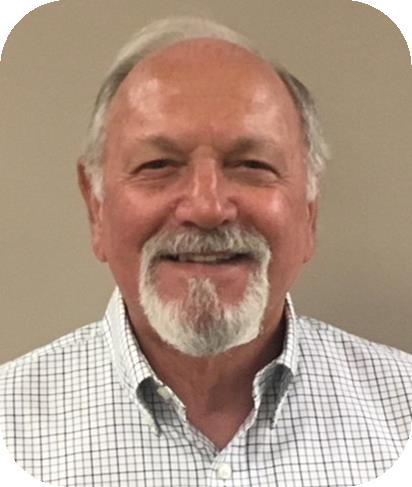
By John J. McTighe
It was a year ago that RESDC rolled out our self-service website for the convenience of our members. I’m pleased to report that we’ve seen a steady increase in the use of the self-service tools since that time. You can use that site to update your personal information, make reservations and pay for upcoming RESDC events, and add your name to the membership directory. If you haven’t taken advantage of the site yet, I encourage you to log onto the RESDC webpage at www.resdc.net then click on “Member Login.”
I was pleased to see the SDCERA Board of Retirement approved a cost of living adjustment (COLA) for retirees at their February 15th meeting. The adjustment for Tiers I, II, and A retirees is 3%, while the adjustment for Tiers B and C retirees is 2% effective April 1, 2018.
Healthcare coverage is complicated, both for those under 65 and those who qualify for Medicare. It is important that we all evaluate our options and look closely at the balance between what we pay in premiums, what we receive in coverage, and out-of-pocket expense exposure. I recently had a discussion with Peter Blasi of My Senior Health Plan. You may recall that My Senior Health Plan works with Medicare-eligible RESDC members to assist them in evaluating their healthcare coverage options. Several months ago, I sent a letter to members letting them know of this service.
Peter reported that as of late January, My Senior Health Plan had received 210 calls from our members in response to that letter. After counseling with those members, 65 enrolled in plans that better met their needs. As a result, in 2018 those 65 retirees will save more than $300,000 in premiums, for an average savings of $5,620 per retiree. This is a service that is available to RESDC members for no charge. Members of group Medicare plans are eligible to change plans at any time, so if you’re not sure your current plan is meeting your needs at a price you want to pay, please check out My Senior Health Plan at www.myseniorhealthplan.com or call them at (800) 243-0260.
It’s the time of year that I once again encourage our members to reach out to fellow retirees who have not yet become members of RESDC. Each One, Reach One is the motto we’ve used for these outreach efforts. In looking back over the past year, I noticed that this is the time of year with the lowest new members joining RESDC. I urge you to talk with your former co-workers about RESDC membership and send them to our website www.resdc.net, or call the RESDC office at (866) 688-9229, to get more information and to request a membership packet.
The RESDC Board of Directors adopted an advocacy plan in August 2016. The plan is intended to increase the awareness of the public and our elected representatives regarding retirement security in general and defined benefit retirement plans in particular. Our Executive Director, Mark Nanzer, and I have been actively pursuing the objectives of the plan over the past year. In that regard, we have met with many of the state and federal legislators to inform them about our interests and enlist their support for legislation that is supportive of retirement security and public pensions. I have found that most of our elected representatives are supportive of our efforts. This will be an ongoing effort on RESDC’s behalf. We will meet with the candidates for the two open seats on the County Board of Supervisors to introduce them to RESDC and help educate them about county retirement issues.
I’m looking forward to seeing some of you at our second annual RESDC Evening at the Theatre that will be on March 21st at the Cygnet Theatre in Old Town. We’ll be seeing the musical A Little Night Music. We sold out the initial block of tickets we reserved for members, but might be able to accommodate more people if you still want to join us, subject to availability. If you’re interested in the group-rate tickets, please contact the RESDC office at (619) 688-9229. ◾
Each One,
Reach One
Meet and Greet with RESDC Leadership
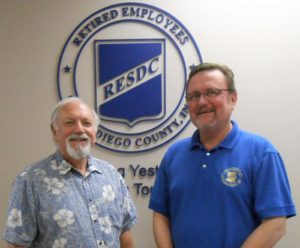 When: Tuesday, March 13, 2018 at 9:30 a.m.
When: Tuesday, March 13, 2018 at 9:30 a.m.
Where: RESDC Office, 8825 Aero Dr., Suite 200, San Diego, 92123
RESDC members and any other interested parties are cordially invited to join RESDC President John McTighe and Executive Director Mark Nanzer for an informal gathering. This is your opportunity to interact with our leadership, learn more about Retired Employees of San Diego County, and to ask any questions you may have. We hope to see you there!
To RSVP, visit http://www.resdc.net/events or call (619) 688-9229.
Directions: From I-15: Exit West on Aero Dr., drive 1.6 miles. RESDC Office is on left side. ◾
 Cesar Chavez Day
Cesar Chavez Day
Cesar Chavez Day is a State holiday in California and several other states. The day is commemorated to promote service to the community in honor of Cesar Chavez’s life and work. The holiday celebrates the birth and legacy of the civil rights and labor movement activist Cesar Chavez on March 31st of each year. The RESDC and SDCERA offices will be closed on Friday, March 30 in honor of Cesar Chavez Day. ◾
A Retirement Deal’s a Deal, One Would Think
By Stan Coombs
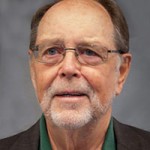 “Government of laws and not of men,” John Adams mumbled to himself in 1780, while drafting the Massachusetts State Constitution. It’s become an iconic principle. We believe it means good government follows written rules, not the whims of rulers. But, there are several kinds of laws: constitutions, charters, initiatives and referenda approved by voters, laws debated and approved by elected legislators, and case law that comes from judges clarifying how legislation applies. The following is about case law.
“Government of laws and not of men,” John Adams mumbled to himself in 1780, while drafting the Massachusetts State Constitution. It’s become an iconic principle. We believe it means good government follows written rules, not the whims of rulers. But, there are several kinds of laws: constitutions, charters, initiatives and referenda approved by voters, laws debated and approved by elected legislators, and case law that comes from judges clarifying how legislation applies. The following is about case law.
The case in point was Allen v. City of Long Beach. A 1951 charter amendment had raised city employees’ retirement contributions from 2% to 10%, and changed pensions. It was challenged.
In 1955 the California Supreme Court held that the charter amendment unconstitutionally impaired (worsened) contract rights of employees, and outlined a test. “Vested contractual pension rights may be modified prior to retirement,” the Court said, “to permit adjustments in accord with changing conditions,” while maintaining the “integrity of the system.” Such changes must be “reasonable,” bearing “some material relation to the theory of a pension system and its successful operation.” The Court concluded that disadvantages to employees’ retirement “should be accompanied by comparable new advantages,” however, disadvantages to active employees must be accompanied by comparable new advantages (emphasis added.)
Now widely known as “The California Rule,” this state supreme court ruling was further refined, notes law school professor Alexander Volokh. “By entering public service an employee obtains a vested contractual right to earn a pension on terms substantially equivalent to those then offered by the employer,” as well as the right “to earn future pension benefits through continued service substantially equivalent to those then offered.”
The California Rule has been driving California and 12 other state courts, on public retirement rights issues, ever since.
Professor Volokh helpfully provides examples. Rulings on suits against the cities of San Diego and Downey were based on whether or not compensating benefits were offered, that offset benefit decreases. A suit against the City of Pasadena was decided on the basis of whether there were offsetting new advantages, and rulings in a case against the City of Los Angeles were based on the Court’s determination whether the required relationship between the changes and the goals of the retirement system existed, whether benefit reductions were reasonable, and whether there were offsetting new benefits.
There was also debate about whether state pension statutes are “contracts” in this context, rather than revocable benefits. That’s important. Contract clauses in the California and U.S. Constitutions prohibit governments from reneging on contracts. One judge is quoted, that a statute isn’t a contract unless “the state’s intent to contract is expressed in terms too plain to be mistaken.”
Enter the California Public Employees Pension Reform Act of 2013, or PEPRA. (See “New Retirement Rules,” October 2012 NETWORK), and companion, AB 197.
PEPRA broadly changed retirement benefits for nearly all California public agencies, and AB 197 precluded certain compensation from pension calculations, to inhibit unpopular “pension spiking” – roughly defined as attempts to increase final employment compensation, and therefore pensions.
Several lawsuits were filed against PEPRA and AB 197, notably the 2016 Marin Association of Public Employees v. Marin County Employees Retirees Association. Employees argued that AB 197 impaired their vested right to have certain pay items recognized as “pensionable compensation” during pension calculations, without compensating benefits.
In August 2016, California Appellate Court Justice James Richman ruled against the plaintiff employees in Marin, stating, “a public pension system is subject to the implied qualification that the governing body may make reasonable modifications and changes before the pension becomes payable and until that time the employee does not have a right to any fixed or definite benefit, but only to a substantial or reasonable pension.”
Richman also disagreed that employees “must” be offered comparable benefits, opining that the state Supreme Court had used “should” in other cases, and therefore hadn’t intended “to herald a fundamental doctrinal shift.” The previously settled doctrine in our California Rule was apparently up for grabs.
But another California Appellate Court weighed in, walking Justice Richman’s ruling back a bit. In January 2018, Justice Timothy Reardon agreed with Richman’s rejection of the absolute need for comparable advantages, but politely disagreed with his application of the law.
Reardon said that the Supreme Court’s term, “should” means “really ought to,” rather than “don’t have to,” and when no comparative new advantages are provided to offset benefit reductions, the corresponding burden to justify the reductions ”will be substantive,” only justified by “compelling evidence.” Reardon apparently suggested that a “total pension system collapse” might meet the “substantive” standard (!)
Battle lines are drawn. The California Supreme Court has agreed to hear an appeal of the Marin case when appeals courts rule on similar cases in Alameda, Contra Costa and Merced Counties. We shall see how the California Rule fares . . . ◾
2018 Scholarships
By Carlos Gonzalez, Scholarship Chair
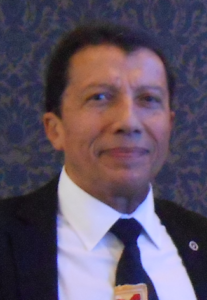
 RESDC’s 2018 Scholarship Program marks its 24th anniversary. Again, we recognize George Liddell (one of RESDC’s founders) for establishing the program, as a living legacy for the many well deserving children and grandchildren of retired RESDC members.
RESDC’s 2018 Scholarship Program marks its 24th anniversary. Again, we recognize George Liddell (one of RESDC’s founders) for establishing the program, as a living legacy for the many well deserving children and grandchildren of retired RESDC members.
Applications are available to download and print from the RESDC website at: www.resdc.net/scholarship-program. Applications are also available to be picked up in person at our office at 8825 Aero Dr., Suite 205, San Diego, 92123. For questions, call the RESDC office toll free at (866) 688-9229 or email resdc@resdc.net.
The deadline is Friday, March 2, 2018. In fairness to all applicants, entries postmarked after that date will not be accepted. Applicants will be notified of the results in June, 2018.
This year, five $2,000 Merit Scholarships will be awarded, plus one Distinguished Community Service Award for $750. We wish to recognize Mr. Roger Dixon (RESDC member), for his monetary contribution to the scholarship fund in memory of his friend Mr. Steve Blocker, a volunteer with the San Diego County Probation Department for nearly 20 years. Mr. Blocker was not a County employee, but his life of service inspires us all. Combined with the continued contribution by Ms. Joan Liddell in memory of her husband, George Liddell, the Scholarship program is able to offer the Distinguished Community Service Award.
Awards will be presented at the end of the 2018 school year. Photos of our 2018 scholarship recipients will appear in a summer issue of The NETWORK. ◾
Recent Events
- State of the County Address—New Board of Supervisors Chairwoman, Supervisor Kristen Gaspar outlined the County’s 2018 goals at the annual State of the County Address on February 27 at the Scripps Seaside Forum in La Jolla.
- Public Pensions Strengthened Their Funding in 2017—Public pension plans continued to improve and strengthen their funded status last year. That is the takeaway from a new report by the National Conference on Public Employee Retirement Systems (NCPERS). With many plans earning double-digit investment returns, pension plans took the opportunity to fortify their funded position for the long term. Access the report at: www.protectpensions.org
- SDCERA COLA—At the February 15th SDCERA Board of Retirement meeting, the Board approved staff’s recommendation for a 3% Cost-of-Living Adjustment for Members in Tiers I, II, and A, and a 2% COLA for members in Tiers B and C effective April 1, 2018. More information about the SDCERA COLA can be found at www.sdcera.org/.
RESDC Facebook Page
If you’re a member of Facebook, please like RESDC’s Facebook page. We can be found by searching for our full name, Retired Employees of San Diego County, or by going directly to: www.facebook.com/retiredemployeesofsandiegocounty
We use Facebook to keep our members informed of upcoming events, newsworthy announcements, and details about the benefits we offer. We also post photos from recent gatherings, meetings, and lunches. Use our Facebook page as another way to stay in touch with RESDC. ◾
![]()
Pension Facts
Stanford Report on “Pension Math” Doesn’t Add Up
Pension Facts at a Glance
41,900
Total number of SDCERA members as of June 30, 2017 (active, retired, and deferred)
By Chris Heiserman, Director
 A “working paper” released from the Stanford Institute for Economic Policy Research (SIEPR) in October 2017 purports to show the cost of public pensions in California is more than retirement systems are stating and will severely squeeze government budgets over the next several years, causing basic services to be curtailed.
A “working paper” released from the Stanford Institute for Economic Policy Research (SIEPR) in October 2017 purports to show the cost of public pensions in California is more than retirement systems are stating and will severely squeeze government budgets over the next several years, causing basic services to be curtailed.
The 193-page paper presents 14 case studies from a range of state and local jurisdictions. It offers observations on the case studies that focus on what they describe as key public pension measures from 2002-03 through 2017-18 and projected results to 2029-30. The measures cited are:
- Employer pension contributions in dollars and as a share of operational budget;
- Funding levels as a ratio of plan assets to accrued liability;
- Unfunded liabilities and unfunded liabilities per jurisdiction household; and,
- Pension crowd out (their theoretical framework for how rising pension costs are likely to draw budget resources away from other needed services)
This all sounds very academic and important. The paper is packed with foot notes explaining its assumptions, methodology and citing sources ostensibly supporting the logic for their approach. The only problem is the authors started with a distinct bias against public pensions and designed a study to reach preconceived conclusions.
It’s really all in the report’s title: “Pension Math: Public Pension Spending and Service Crowd Out in California, 2003-2030.” Here are a handful of the faulty assumptions, “apples and oranges” comparisons and contrived calculations that make the report a prime example of the concerted campaign being waged against public pensions by SIEPR and other conservative sources:
- The 14 case studies are supposed to be meaningfully representative of the hundreds of public pension employers in California. They are not. They include the state and sample cities, counties, special districts and school districts. However, the report combines the results for the five largest plans in the California Public Employees Retirement System (CalPERS) with the California State Teachers Retirement System, two very large and very different pension funds. Also, among the five municipalities studied were two cities (Vallejo and Stockton) that have filed for bankruptcy in recent years, largely due to fiscal problems involving worker retirement obligations. In a footnote, the report’s author explains that averages cited in the “observations” on the case studies reflect the state and the remaining 13 agencies altogether. The averages are not weighted to account for the different sizes of jurisdictions or their pension benefit liabilities, but the report claims the trends are “instructive,” though they don’t necessarily “hold more broadly or for the totality of California public pension plans.”
- Each case study historically tracks pension contributions and “unfunded accrued liability” (the cost of future benefit obligations not currently met), then projects the results out to Fiscal Year 2029-30. In projecting financial conditions and the level of unfunded liabilities out more than a decade, the authors assume that investment return rates and other activities administering the retirement funds will remain constant. This in all likelihood overstates future pension costs since the boards of retirement associations constantly monitor the financial condition of their funds and make adjustments when necessary to meet their long term funding goals.
- In addition, the study portrays funding levels in two different ways. It provides an “actuarial” measure based on the assets and liabilities determined by the pension systems themselves; it also provides a “market” measure based on a much more conservative “riskless rate of return” that they claim “prominent financial economists” say is appropriate to gauge liabilities for public pensions. Of course, this conservative approach makes the pension funds in the case studies look much more expensive for taxpayers.
- The study repeats the pattern of two approaches when forecasting investment returns because SIEPR routinely takes the position that public retirement systems use unrealistically high earnings rates that hide the true costs of pensions. In these case studies they offer “baseline” projections using the pension plans’ rates, and “alternative” projections that are 2% less. For example, looking at the funded ratio of the City of Los Angeles on the actuarial basis cited above, the city’s plan would appear to be 82.3% funded in 2015 and 93.1% funded by 2029 in the baseline projection, but only 80.3% funded in the alternative forecast. The table in this report displaying funded ratios on the more conservative market basis indicates Los Angeles might only be 50.9% funded in 2029 under the baseline projection, and only 41.8% funded under the alternative projection. Naturally if these meager funded ratios were to materialize it would translate into huge dollar shortfalls in meeting public retirement fund benefit obligations. The whole point of this SIEPR paper is to contend that taxpayers will be on the hook for rapidly escalating unfunded pension liabilities and that basic government services will be “crowded out” by the budget-busting tab for pensions.
- To further bolster the “alarmist” message from SIEPR that a fiscal “crisis” is approaching due to public pension unfunded “debt”, the paper devises a new pension metric using population data from the state Department of Finance to assign each jurisdiction’s unfunded pension liability per household. This superficial and unscientific calculation is apparently supposed to make the issue personal for taxpayers and their families. However, after looking at tables presenting this per household measure for each of the 14 case studies, on both actuarial and market bases, and in both baseline and alternative projections to 2029, the results are just confusing.
- In a summary section toward the end of the report, it is stated that several pension “crowd out” themes emerge from the case studies. Working from the theory that the most conservative assumptions, the largest pension fund contributions and biggest unfunded liabilities numbers will be accurate, the authors look at historical budget activity and “suggest” where “crowd out” of services that are traditionally considered part of government’s core “mission” may occur.
Bottom Line
I have to give SIEPR and their fellow public pension critics credit for selecting a really strong metaphor with pension “crowd out.” It really conjures up the image of mounting retirement fund expenses forcing local and state governments to reduce front line services; and it’s cropping up in more and more newspaper articles as SIEPR and other opponents of traditional defined benefit retirement plans publish “studies” and make presentations to local cities masquerading as pension “experts.” Their goal is to undermine public pensions in general using the most conservative possible assumptions and investment earnings rates to make public retirement funds seem unreasonably costly, and thus in their opinion “unsustainable.”
Nevertheless, it is impossible to argue that California elected leaders, taxpayers, and public employees do not face serious fiscal challenges in catching up on their shares of unfunded liabilities in retirement funds and paying for promised future benefits when workers retire. However, the situation is not as dire as SIEPR would like everyone to believe considering the long-term financial planning horizon for pension systems and the fact that state and local governments are taking deliberate steps to tackle the problem.
Making good on the promise of reasonable pensions and retirement security for employees who devote themselves to a career in public service is important. Those workers helped finance their own pensions with regular payroll deductions, and they will be supporting the local, state and national economies in their retirement years.
If you want to read the entire SIEPR report yourself, here is the link. https://siepr.stanford.edu/research/publications/pension-math-public-pension-spending-and-service-crowd-out-california-2003. ◾
 Save the Date!
Save the Date!
RESDC General Membership Meeting
Tuesday, April 24, 2018
Meet the SDCERA “C-Suite”!
RESDC members and any other interested parties are cordially invited to join RESDC as they proudly welcome the leadership of San Diego County Employees Retirement Association.
This is your opportunity to hear from SDCERA leadership on the “State of SDCERA.” We hope you join us for this interactive and information session!
Make sure to stay tuned to The NETWORK for more details on this great event.
Date: Tuesday, April 24, 2018
Time: 1:00 p.m.
Location: County Operations Center
5520 Overland Ave,
San Diego, CA 92123 ◾
 Evening at the Theatre
Evening at the Theatre
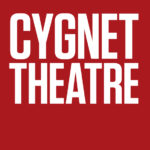 We’re very excited for our upcoming outing to A Little Night Music at Cygnet Theatre on March 21st at 7:30 pm. We had a strong response and will have a group of over 30 people! If you have questions about the RESDC group-rate tickets, please contact RESDC at (619) 688-9229.
We’re very excited for our upcoming outing to A Little Night Music at Cygnet Theatre on March 21st at 7:30 pm. We had a strong response and will have a group of over 30 people! If you have questions about the RESDC group-rate tickets, please contact RESDC at (619) 688-9229.
For directions to the theatre, parking information, or other assistance on the evening of the event, please contact Cygnet Theatre at (619) 337-1525. Cygnet Theatre is located at 4040 Twiggs St, San Diego, CA 92110. ◾
Bits and Pieces
Dorina Bautista and her husband, Juan, celebrated their 50th wedding anniversary in January. They went on a cruise with their children and their families to mark this milestone event. Father Norm Arom gave them a blessing on board the ship, and when they returned they were given a special blessing during mass by their parish pastor. Dorina retired from Superior Court in 2002.
Barbara Erwin and her husband, David, celebrated their 30th wedding anniversary in December. They had dinner with friends at their favorite restaurant in Arizona and then David surprised Barbara with tickets to Hawaii where they celebrated Christmas. They stayed at the same hotel where they spent their honeymoon in 1987. Barbara retired from the Assessor’s Office in 1998.
Editor’s Note: We would like to continue printing some Bits and Pieces items in this newsletter about our members.
If you have taken an interesting trip or have had an intriguing event happen recently, please let us know so that we can share your story with our members. If you have reached an 80th (or more) birthday, or an exciting wedding anniversary, please call Karen Hazel at (866) 688-9229 or write RESDC, 8825 Aero Dr., Suite 205, San Diego, CA 92123.
You may also send your information to us by e-mail at resdc@resdc.net. ◾
RESDC Roundup
Join Us For Our First Social Mixer!
April 10 at 3:30 pm
By Chuck Brown, Membership Committee Chair
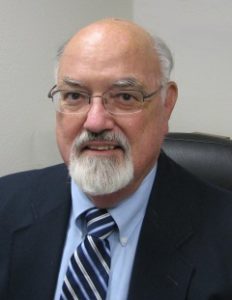 In response to member suggestions for more social activities, we are launching The RESDC Roundup! The RESDC Roundup is a casual social mixer where you can meet up with old friends and make some new ones. Mark your calendars for our first gathering on Tuesday, April 10th from 3:30 to 5:30 p.m. (and beyond if you’d like—it’s happy hour all night). We’ll be located in the bar area of the Black Angus Steakhouse, 10370 Friars Rd., San Diego, 92120. No reservations required (no host bar).
In response to member suggestions for more social activities, we are launching The RESDC Roundup! The RESDC Roundup is a casual social mixer where you can meet up with old friends and make some new ones. Mark your calendars for our first gathering on Tuesday, April 10th from 3:30 to 5:30 p.m. (and beyond if you’d like—it’s happy hour all night). We’ll be located in the bar area of the Black Angus Steakhouse, 10370 Friars Rd., San Diego, 92120. No reservations required (no host bar).
Future RESDC Roundup social mixers are planned for later this year, and we’ll hold them in various parts of the county. If you have a favorite happy hour place, let us know – It could be the location of a RESDC Roundup! ◾
San Diego County Credit Union

Are you taking advantage of SDCCU’s FREE Checking with eStatements? Access over 30,000 surcharge-FREE CO-OP ATMs nationwide. Visit https://www.sdccu.com/segs/partner to see how you can get up to $100 for a limited time! Open an account in minutes and free yourself of monthly activity fees. When you direct deposit your pension check into your SDCCU® checking account, you may enjoy it earlier than your regularly scheduled payday. Sign up for direct deposit at https://www.sdccu.com/checking-and-savings/free-checking-account/direct-deposit-forms today to start enjoying your pension check early! Restrictions apply. Actual deposit date not guaranteed. Federally insured by NCUA.
SDCCU Dining Deals-get cash back with your SDCCU debit and credit cards. SDCCU has partnered with Mogi so you can earn cash back when you dine out. No coupons or loyalty cards are necessary. Simply use your enrolled SDCCU debit or credit card at participating restaurants to earn up to 25% cash back. ◾
 How the REAL ID Act Impacts Californians
How the REAL ID Act Impacts Californians
The California DMV began offering a federal compliant REAL ID driver license or ID card as an option to customers on January 22, 2018. But there’s no need to rush to the DMV. A REAL ID compliant driver’s license or identification card isn’t needed until October 1, 2020. And even then, it’s only needed if you want to use it as identification to board an airplane, or to enter military bases and secure federal facilities. If you don’t get it, you can still always use a passport or other TSA-approved identification to board a plane. For entry into federal facilities, check with the facility for identification requirements. You do not need a REAL ID compliant license to drive.
So, who might want to get the new ID? If your license is expiring anyway, it may be worth it to switch now and save yourself the hassle of a future DMV visit before October 1, 2020. To apply, you’ll need to visit the DMV and bring a few types of documentation with you to verify your identity; the list of required documentation is available on the California DMV website. Once you have a REAL ID card, you may be able to renew by mail or online, just like a regular card. There is no extra charge in California to obtain a REAL ID compliant driver’s license, but you do still have to pay the standard renewal fee. If you’re not due for renewal, but want to switch anyway, you’ll need to pay the standard card replacement fee.
For more information, visit the California Department of Motor Vehicles website at: www.REALID.dmv.ca.gov.
Live in another state? Fifty-five out of 56 states and territories are currently compliant with REAL ID or are non-compliant with an extension, with American Samoa being the only exception. For those 55 states and territories, October 1, 2020 is the deadline for individuals to have a REAL ID compliant card for the purposes outlined above. You may see the date October 10, 2018 come up, but again, there’s no need to rush to the DMV. This is only the date by which states, not individuals, must either meet the requirements of the REAL ID Act or request an additional extension to bring the state into compliance. For more information about your state’s compliance or extension status, visit: www.dhs.gov/real-id. For information about obtaining a REAL ID compliant ID, contact your state’s DMV. ◾
 Free Smoke Alarms for Seniors!
Free Smoke Alarms for Seniors!
Throughout the year, The Burn Institute, community volunteers, and members of the fire service take part in a collaborative effort to install FREE lifesaving smoke alarms for qualified seniors in San Diego County.
Smoke alarms save lives. National safety statistics show that adults age 65 and older are two times more likely to perish in a home fire than any other segment of the population. Local non-profit, The Burn Institute, wants to keep our seniors safe. If you are a homeowner over the age of 62, they will install free smoke alarms in your residence, which adhere to California safety code. These free smoke alarms are equipped with 10-year lithium batteries, which last the entire life of the alarm.
Don’t get up on a ladder and risk falling—let trained professionals do it for you at no cost.
Email smokealarm@burninstitute.org or call (858)541-2277 to schedule your free smoke alarm installation.
Burn Institute Information:
The Burn Institute Senior Smoke Alarm Program works in collaboration with local fire departments to install FREE smoke alarms to seniors aged 62 and over who need them. Low income families may qualify as well. They can be reached at (858) 541-2277 for more information. ◾
 Welcome New Members
Welcome New Members
Shelley Derham – Health & Human Services
Francis Foroozesh
John Oldenkamp – Health & Human Services
The surviving spouse of a member is eligible for RESDC membership. For enrollment assistance, please call: (866) 688-9229. ◾
NETWORK is the official monthly newsletter of the Retired Employees of San Diego County, Inc. (RESDC), a private non-profit organization.
The information printed in the NETWORK is believed to be from reliable sources. However, no responsibility is assumed by the NETWORK for inaccuracies contained herein.
Business and Inquiries: Business matters and address changes may be recorded on our voicemail at any time, call (866) 688-9229. Please spell your name so the correct member record can be located.
Retired Employees of San Diego County, Inc.
8825 Aero Drive, Suite 205 | San Diego, CA 92123
Office Hours: 9 a.m. to 2 p.m. Monday through Friday
TELEPHONE: (866) 688-9229 Toll Free
FAX: (619) 688-0766
E-MAIL: resdc@resdc.net





